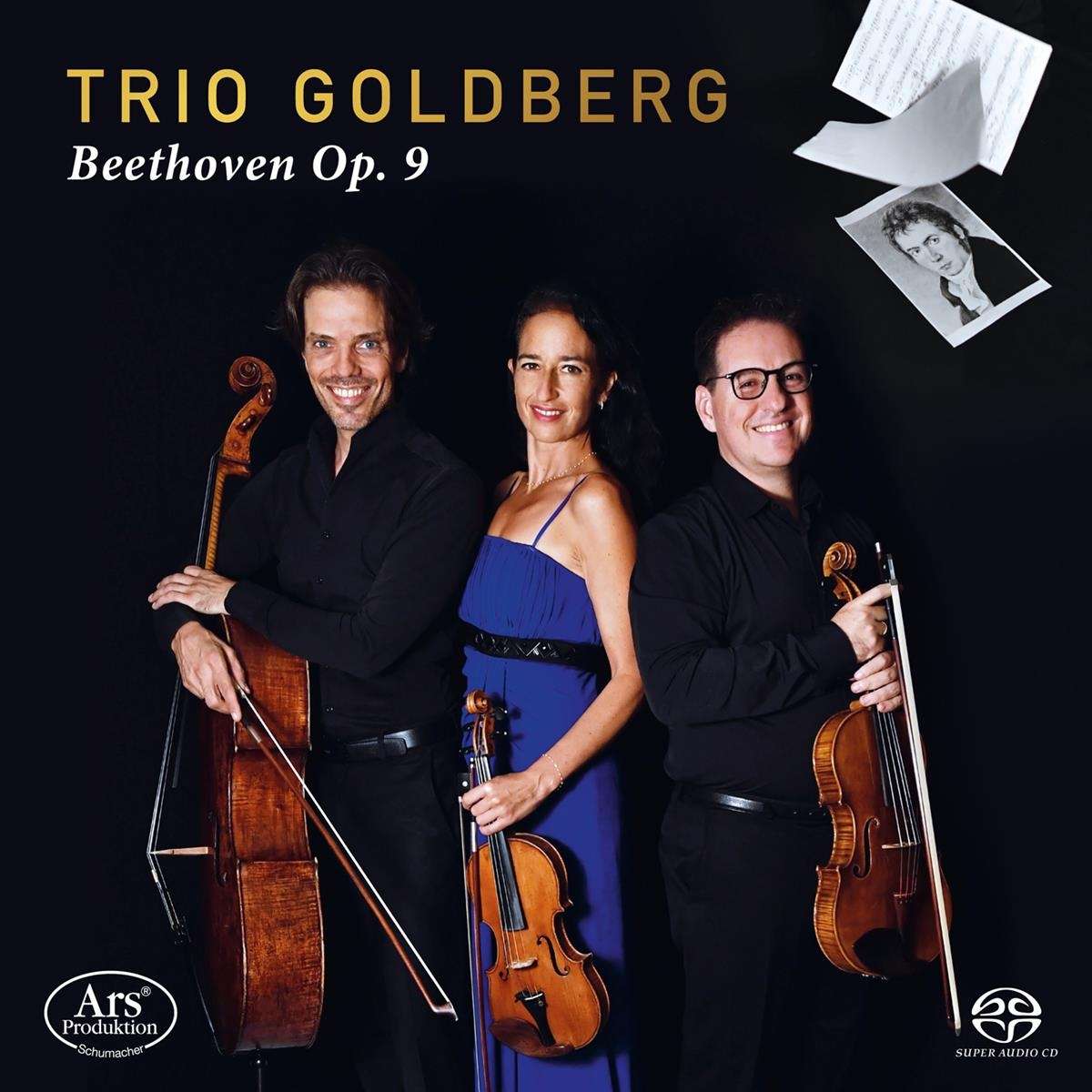Das Trio Goldberg kommt nach zwei Alben mit wenig gespieltem Repertoire mit der dritten Einspielung zum Kanon. Die drei unter einer Opusnummer geschaffenen Streichtrios von Beethoven haben nach langer Beschäftigung damit nun wohl die Einspielreife erreicht. Das Trio Goldberg versteht das erste Trio symphonisch, das zweite intim und verspielt, das dritte in c-Moll dramatisch und kraftvoll.
Bereits diese frühen Kompositionen sind mit ihrer klanglichen Verdichtung, spannungsreicher Dramatik und der herausragenden Formdisposition für das Genre maßstabgebend. Beethoven selber wertete sie als das Beste, was er bis dahin geschrieben hatte.
Das Trio Goldberg zeigt mit entspannt wirkendem Spiel, dass es einerseits die umfassende Kenntnis und Vertiefung in die Materie hat. Andererseits wirken die Interpretationen mit ihrem klanglich feinen Spiel trotz eines charmant schroffen Ansatzes, wie eben frisch auf das Notenpult gelegt. Die lange Befassung hat erfreulicherweise keine hörbare Routine ausgelöst. Akzente werden deutlich, doch klingend und nicht brutal oder kantig gesetzt. Klar in der Artikulation und sublim in der Gestaltung erreichen sie eine mitreißende Natürlichkeit, die auch ein wenig burschikos klingt. Doch in diesem Fall bietet das eher einen Reiz.
Verglichen mit der Einspielung des Trio Zimmermann etwa wird dort eine vielleicht noch größere Selbstverständlichkeit aufgrund der größeren solistischen Erfahrung der Musiker erreicht. Aber hier bieten die Mitglieder des Trio Goldberg eine auch von der Technik sehr gut eingefangene Interpretation an, die auch in der instrumentalen Beherrschung der Werke keinen Vergleich zu scheuen braucht. Eine von vorne bis hinten gelungene Lesung dieser drei Trios erfreut die Ohren des Zuhörers.
After two albums with little-performed repertoire, Trio Goldberg’s third recording is a canon. The three string trios by Beethoven, created under one opus number, have now probably reached recording maturity after a long period of study. The Goldberg Trio understands the first trio symphonically, the second intimately and playfully, the third in C minor dramatically and powerfully.
These early compositions already set the standard for the genre with their tonal density, suspenseful drama and outstanding formal disposition. Beethoven himself considered them to be the best he had written up to that point.
With their relaxed playing, the Goldberg Trio demonstrates on the one hand that they have a comprehensive knowledge and in-depth understanding of the material. On the other hand, despite a charmingly brusque approach, the interpretations with their tonally fine playing come across as freshly placed on the music stand. Fortunately, the long engagement has not resulted in any audible routine. Accents are clear, yet sonorous and not brutal and angular. Clear in articulation and sublime in design, they achieve a rousing naturalness that also sounds a little boyish. But in this case, that is more of an attraction.
Compared to the Trio Zimmermann’s recording, for example, the musicians’ greater soloistic experience means that they are perhaps even more natural. But here the members of Trio Goldberg offer an interpretation that is also very well captured in terms of technique and which need fear no comparison in terms of the instrumental mastery of the works. A successful reading of these three trios from front to back will delight the listener’s ears.




















